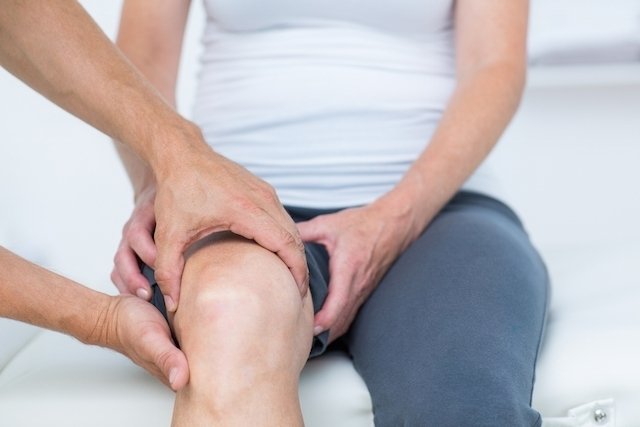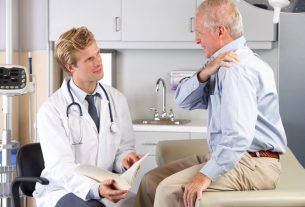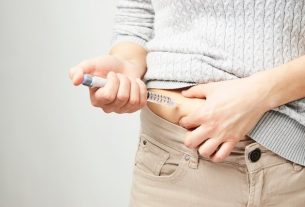Treatment for rheumatoid arthritis must be guided by a rheumatologist, and usually begins with the use of medications, which are chosen by the doctor according to the symptoms presented and the stage of the disease.
In addition to drug treatment, physiotherapy is recommended to activate joints, strengthen muscles and alleviate symptoms. It is also important to change your eating habits, consuming foods with anti-inflammatory properties daily to alleviate symptoms.
Read too: Rheumatoid arthritis: what it is, symptoms, causes and treatment
Rheumatoid arthritis is an autoimmune, inflammatory, systemic and chronic disease, which causes symptoms such as pain and stiffness in the joints, especially upon awakening, and which has no cure. The established treatment for arthritis aims to alleviate symptoms, prevent disease progression and improve quality of life. Know the main symptoms of rheumatoid arthritis.

How the treatment is carried out
The best treatment options are:
1. Medicines for rheumatoid arthritis
The main medications recommended for rheumatoid arthritis are:
- Methotrexate, sulfasalazine, hydroxychloroquine, chloroquine, tofacitinib and leflunomidewhich are disease-modifying medications (MMCD) and correspond to the first line of treatment, and must be started immediately after diagnosis;
- Ibuprofen and naproxen, which are anti-inflammatory medications used mainly to alleviate symptoms and improve quality of life.
Medications should ideally be started within the first 12 months of disease development to prevent more serious damage and improve functional capacity.
Drug treatment must be carried out as recommended by the doctor and it is important that the person is constantly monitored by the doctor so that the body’s response to the treatment can be observed.
2. Physiotherapy
Physiotherapy treatment is a great way to reduce pain, inflammation and improve the quality of movement in the affected joint. Physiotherapy is also important to keep muscles properly strengthened and stretched, as well as preventing or reducing joint deformities.
Physiotherapy should include active and passive exercises and stretching, the use of electrotherapy devices, and the use of hot water bottles. In addition, the practice of aerobic physical exercises, such as walking, cycling, swimming and water aerobics, may also be recommended.
3. Surgery
When rheumatoid arthritis generates deformities that reduce the person’s quality of life, the rheumatologist, together with the orthopedist, will be able to assess the need for surgery to correct the deformities. However, this will depend on the individual’s general health and daily activities.
4. Complementary treatment
Complementary treatment for rheumatoid arthritis can be done with diet, meditation, acupuncture, auriculotherapy, massage, chiropractic, among others, but does not exclude the need for clinical and physical therapy treatment, although they can improve quality of life.
5. Natural treatment
Natural treatment can be carried out using medicinal plants that have anti-inflammatory, analgesic and diuretic properties, in the form of tea, juice or poultice, as they help to alleviate symptoms, which has a direct impact on quality of life.
However, this type of treatment should never replace medication treatment recommended by the doctor and, furthermore, these remedies should only be used with the knowledge and authorization of the rheumatologist. Some good examples include:
- tea horsetail, fennel and burdock;
- Take the juice eggplant with lemon upon waking;
- Take the juice pineapple daily.
Sucupira tea is also great, and this plant can also be used in capsules.
Possible complications
Due to the involvement of bones, cartilage, joint capsule, tendons, ligaments and muscles, deformities can appear in the joints, which make movement difficult and leave an unsightly appearance on the person.
As the disease is progressive and has no cure, over time, the person may present deformities such as wind toes and swan neck toes, knees turned inwards, changes in the spine, rupture of tendons and erosions of joints and feet. plans.
To prevent these complications, it is recommended to follow the treatment indicated by your doctor and undergo regular physiotherapy sessions.
Bibliography
- BRAZILIAN SOCIETY OF RHEUMATOLOGY. Rheumatoid arthritis. Available at: <https://www.reumatologia.org.br/doencas-reumaticas/artrite-reumatoide/>. Accessed on September 26, 2019
- MINISTRY OF HEALTH. Clinical Protocol and Therapeutic Guidelines: Rheumatoid Arthritis. 2014. Available at: <https://portalarquivos2.saude.gov.br/images/pdf/2014/dezembro/15/Artrite-Reumatoide.pdf>. Accessed on September 26, 2019

Sign up for our newsletter and stay up to date with exclusive news
that can transform your routine!
Warning: Undefined array key "title" in /home/storelat/public_html/wp-content/plugins/link-whisper-premium/templates/frontend/related-posts.php on line 12
Warning: Undefined array key "title_tag" in /home/storelat/public_html/wp-content/plugins/link-whisper-premium/templates/frontend/related-posts.php on line 13




